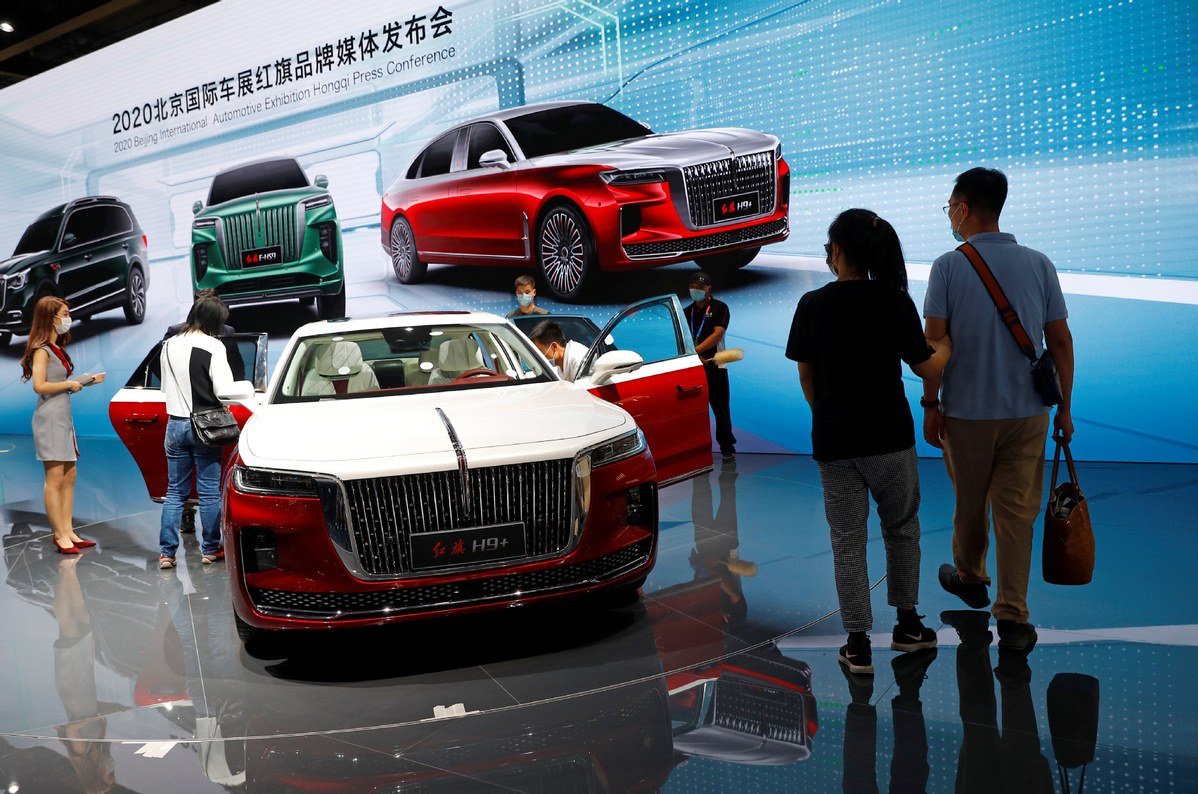
Visitors look at the FAW Hongqi H9+ at the Beijing International Automotive Exhibition, or Auto China show, in Beijing, September 26, 2020. [Photo/Agencies]
China's State-owned FAW Group is planning to invest 210 billion yuan ($31.4 billion) in its Hongqi brand's research and development, as part of the effort to make it a globally renowned premium brand.
FAW, Chinese partner of Volkswagen, Toyota and Mazda, unveiled the plan at a technology meeting it held last week in Changchun, Jilin province.
The carmaker said the number of staff for Hongqi research and development as well as other innovative services will reach 30,000 in 10 years.
At the same event, FAW Chairman Xu Liuping unveiled a tech roadmap called R. Flag for the Hongqi brand by 2030, which covers seven aspects including electrification, connectivity and digitalization.
Hongqi has seen rapid development since a comeback strategy was launched in 2018.
Established in 1958, Hongqi was known for its limousines and parade cars made for top Chinese leaders, but its sales had been almost negligible until very recently.
It now offers eight models in the market, and another 13 are under development. Hongqi sales surpassed 153,000 units in the first 10 months of 2020, up 103 percent year-on-year.
Sales in October reached 23,000, an increase of 93 percent year-on-year, indicating a rising demand for the brand, despite the coronavirus pandemic.
The company estimates its sales this year will exceed 200,000 and reach 400,000 in 2021.
Besides the Hongqi brand, FAW has made progress with other brands as well.
FAW now has 112 models available in the market bearing five different marques. It has another 59 models in development and 43 planned.
The carmaker sold 2.66 million vehicles in the first three quarters of 2020, up 8 percent from the same period last year.
Statistics from the China Association of Automobile Manufacturers show that carmakers in the country sold 17.11 million vehicles from January to September, down 6.9 percent year-on-year.


